
Kad smrznute rijeke, vukovi, snijeg i vjetar nikako ne uspijevaju razumjeti što im želiš reći pa im počneš ostavljati poruke snimljene na kasetofonu.
Avant-folk.
Izvrsno.
Recorded on analogue tape recorders in a cabin outside Whitehorse,
Yukon, Polaraura is a sonic journey of spiritual longing in a beautiful
but undiscerning landscape. Featuring sounds of frozen rivers, wolves,
snow, wind, forest spirits, owls and, even, northern lights, Polaraura
takes the listener on a journey to another world - a forgotten
wilderness - within themselves.
Broken Deer is the low-fi field recording/ experimental folk project of Canadian Lindsay Dobbin. Through combining sounds of
exterior and interior
environments, Broken Deer explores forgotten wildernesses and unearths
tender histories to create highly personalized sonic landscapes.
Fantastic stuff from Canadian Lindsay Dobbin, this is the quietest
weirdest lo-fi folk you’ll ever hear. Dobbin has cobbled together a
record that sounds like it was recorded on a wax cylinder, buried for a
century or two at the bottom of a well, and excavated when the current
land owners found out the well was haunted. Straightforward sounds, a
piano, a guitar, her ethereal childlike voice, and all the life of the
Yukon wilderness, howling wolves, the cold wind, bird calls,
occasionally warped & twisted into a drugged dream but always caked
in a murky tape hiss, soft & simple, a record deeply in touch with
the self, connected to every fiber of the world, but still seeking an
obscured transcendent understanding. Truly incredible work. The sadly
sold out tape was wrapped in birch bark and moose sinew, so maybe if all
of you ask nicely she’ll re-release it. If not, trust me that the
digital version will certainly suffice. - antigravitybunny.com/
Film for “My Heart’s in the Highlands" from Polaraura created by Heather Rappard.
Trailer for Polaraura. Created by Heather Rappard.
"White Woman" from Polaraura. Film created by Alice Cohen.
"Hunter Gatherer" (live) synced with Harry Everett Smith’s “Early Abstractions: Numbers 1-5, 7 & 10." The song was recorded live by Derrick Hiltz and features Ashleigh Gaul on keyboards and Lindsay Dobbin on drums.
"Coming of Age Funeral III" from Our Small Going synced with a portion of the 1979 documentary, The Secret Life of Plants.
Trailer for Polaraura. Created by Heather Rappard.
"White Woman" from Polaraura. Film created by Alice Cohen.
"Hunter Gatherer" (live) synced with Harry Everett Smith’s “Early Abstractions: Numbers 1-5, 7 & 10." The song was recorded live by Derrick Hiltz and features Ashleigh Gaul on keyboards and Lindsay Dobbin on drums.
"Coming of Age Funeral III" from Our Small Going synced with a portion of the 1979 documentary, The Secret Life of Plants.
Releasing an album means recording, mixing, mastering, and sharing a piece of yourself through music — and the way all that happens can be unbelievably revealing. In Broken Deer’s experimental, ghostly, and cassette-recorded fifth release,Polaraura, we get a unique window into Lindsay Dobbin’s musical temperament as well as her natural and spiritual concerns. At the same time breathlessly intimate and palpably alienating, Dobbin’s music invites external forces in while still keeping itself closed off, lending an interesting dichotomy to Polaraura‘s collection of fluctuating sounds and melodies.
Acknowledging the setting in which Polaraura was created is crucial to appreciating it. Using analogue tape recorders in an off-the-grid cabin, Dobbin combines her own melodies and bare instrumentation with a myriad of collected sounds, both organic and seemingly otherworldly. Whistling, warbling, and whooshing sounds infiltrate the album, blurring the line between natural and unnatural so that it’s hard to tell where the ‘music’ ends and the ‘background noise’ begins. The ambient noise is sometimes turbulent — even distracting — as vibrating, buzzing, tinkling, and ringing sounds circle the album’s main melodies. At other times, it is peaceful, even desolate or eerily unearthly: the simple sound of the wind blowing through vacant lands or that of spirits communicating with each other. The album seems an experiment in recording, which comes off best, for example, at the end of “Part 3″, when the gradually accelerating piano part — warbling from the distortion of the tape recorder — becomes a rippling effect that turns into a flapping sound, and finally unravels into the conclusion.
Dobbin’s instrumentation throughout the album is careful and fragile-sounding. From the high-pitched, delicately-chosen piano melodies on “Part 4″ to the rich, nostalgic guitar fingerpicking on “Part 1,” to her own childish and wholesome vocals throughout, Dobbin creates an alluring and elusive melodic thread for us to follow. Somewhat intriguingly distorted and out-of-tune throughout due to its use of tape recording, Polaraura‘s songs deliver an eerie, old-timey feel in the midst of the album’s experimentation. Dobbin occasionally strips everything away, drawing our focus onto the solitary sounds of nature — the wind blowing, the owl speaking, the wolf singing — which have a melody and regularity all their own. These stark moments serve the album’s melodic parts, which are also best when most accessible, such as during the satisfying opening of “Part 4″ and the pleasing variations that occur on its piano melody.
The overall vitality of Polaraura lies in its invitation of external forces, and yet the album remains — in meaning — somehow hard to reach. By using tape recorders and embracing the ambient, spiritual, and natural noises around her, Dobbin encourages us to notice what she notices, to feel like we are where she is, and to want to be where she is. And yet we’re not quite there; during the third part of the album’s final track, “Part 5: Consumed / Wolf Song / I Want”, when Dobbin — the subject — should be closest, her vocals sound far away, grainy, and irregular, as if they were coming out of a crank-able music box. Undoubtedly a very personal, intimate, and direct way to record, Dobbin’s method on Polaraura also has the potential to distort or obscure her meaning.
And yet, the elusiveness of the album is intriguing, as it draws us around to wonder at the elements Dobbin hides or omits as much as at those she welcomes and shares.- by ELIZABETH PERRY
‘Polaraura’ is the stuff of half-remembered dreams. Throughout the album there’s the sense of familiarity, of a near comfort. Icy experimentation certainly makes the warm folk musings appear that much more inviting. Aspects of it feel almost touchable. Combining field recordings, drone, environmental noises, vocals, and the occasional odd instrument it is a very full sound. The lo-fi recording is so well employed on the album that it might as well count as a separate instrument. Vocals add to the sense of mystery by being sung through so much lo-fi distortion.
‘Part 1’ spends the first two minutes simply searching for signs of life. This adds to the cryptic appeal of the song. By the middle the folk influence is heavily felt. However the end is extremely industrial, borderline noise in nature. For ‘Part 2’ Broken Deer introduces a more classical bent, one that she continues to use throughout the rest of the album. A broken piano flows from ‘Part 2’ into ‘Part 3’. Unlike ‘Part 2’ there is considerably more actively on Part 3, threatening to derail her delicate singing. Somehow the balance between the noise and the fragility of her songs is not interrupted. On ‘Part 4’ excluding the piano’s mournful tune there is little to indicate any human presence. Right at the very end it gets particularly bizarre with mixtures of field recordings, ambient noise, far-away recordings, and strange tape manipulations. It is a perfect end.
Rarely does an album effortlessly combine the experimental with the heartfelt. ‘Polaraura’ is such an album. - by Beach Sloth
June 6, 2013: CKDU 88.1 FM (Canada)
June 6, 2013: The Coast (Canada)
July 28, 2010: Yukon News (Canada)
February 1, 2010: Weird Canada (Canada)
April 1, 2008: Chart Attack (Canada)
REVIEWS
June 20, 2013: Forest Gospel (USA)
June 20, 2013: Anti-Gravity Bunny (USA)
June 12, 2013: Redefine Magazine (USA)
June 4, 2013: Nowamuzyka (Poland)
May 23, 2013: Stereophile (USA)
May 12, 2013: Beach Sloth (Canada)
April 30, 2013: Southern Souls (Canada)
March 28, 2013: Hartzine (France)
March 27, 2013: Silent Shout (Canada)
May 29, 2010: Chocolate Bobka (USA)
May 27, 2010: The Coast (Canada)
April 8, 2010: Stereophile (USA)
February 28, 2010: A New Band A Day (England)
January 29, 2010: Weird Canada (Canada)
December 31, 2009: Hero Hill (Canada)
December 6, 2006: Popmatters (USA)
October 8, 2006: Cokemachineglow (Canada)
LISTS
January 7, 2012: Weird Canada (Canada)
DOUBLE VISION QUEST & BROKEN DEER - MEDICINE SONGS (2012) streaming
OUR SMALL GOING (2009) streaming
Before leaving her childhood home, a little girl went by moonlight into
the woods and buried all of her songs. She dug holes deep into the
earth, carved words on birch bark, and slept at the edge of a living
marsh until dawn. Then she was gone. Twenty years later she returned,
wounded by the world out there, and began the unearthing process -- a
quest for what had been displaced, and needed to be found. Our Small
Going is a document of what was left, set to the sky. Embedded in the
movements of decay, the sounds are little truths of matter and hand -- a
tender history of breathing air into earth.
Jun 2006
Feb 2009
Feb 2010
Interview :: Broken Deer
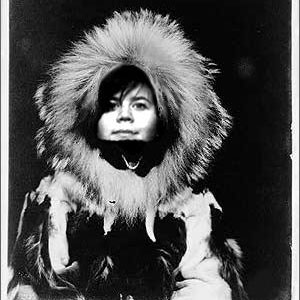
Interview with: Lindsay Dobbin
From: Broken Deer
(conducted by: Zachary Fairbrother)
Whitehorse, YK
::web/sounds::
Broken Deer is the avant-folk project of Lindsay Dobbin, formerly of Halifax were she played drums with Play Guitar and drone-weirdos Oh, Beautiful! Majestic! Eagle!
Lindsay recently relocated to the glorious nature of the Yukon, wherein
Broken Deer has become more ethereal, strange, and gnostic. She kindly
took the time to answer some questions.
Zachary Fairbrother
Avant-Lard / Weird Canada
avantlard.blogspot.com / weirdcanada.com
/////////////// BROKEN DEER INTERVIEW ///////////////
Z.
=
Zachary Fairbrother (Avant-Lard // Weird Canada)
L.
=
Lindsay Dobbin (Broken Deer)
Z.
::
Not only are you a musician but you are a visual
artist as well. Is there a common thread that ties your different
approaches of art all together? Even within your music you explore
styles that are sonically very different from one another. How do all
these different aesthetics, fit you, as one artist?
L.
::
I’m a very young artist. I don’t mean “I’m only 26, and
that’s younger than the majority of the population.” No. I mean that
I’m still discovering what subjects and mediums interest me. It’s all
still fresh. Art, and I include music in that, has always been a process
of discovery for me. When I moved to the Yukon over a year ago, I
didn’t bring any instruments with me, only a hand-held tape recorder. I
remained open to whatever came into my life. Surprisingly, the first
thing that transpired was working with the land. I spent five months on a
Yukon homestead, digging potatoes, raising animals, horseback riding,
eating. Afterward, I took care of a friend’s house and they owned an
upright piano. I had rarely played the piano, but that’s what was there.
I began playing, figuring sounds. New Broken Deer songs like “White
Woman” came from that experience. I strongly feel that playing that
instrument was a similar process to interacting with the land. It was a
means of grounding — connecting to the unspoken stories in that
particular place. So, in short, I think the aesthetic tie in my art is
the process, less than a subject matter or medium. And the process is me
interacting with a particular place, and all the materials it offers –
whether they be a kazoo, crayons, wool or soil – with the intention of
finding some truth. I really hope I have that fresh approach my whole
life, and not get stuck in a routine. I think an artist can always
discover different worlds, transform as a person but create work that is
consistent with who they are, even if it be superficially different.
Z.
::
Your music has a sense of timelessness. You have the
ability to create a sound outside genres and trends while remaining
very idiosyncratic. Your voice, instrumentation, and aesthetic point to a
day gone by, while your recordings and compositional techniques
sometimes point ahead. Do you think of Broken Deer as ancient or modern?
L.
::
I don’t think of Broken Deer being exclusively ancient
or modern. Like you say, the music or sound is not really associated
with any particular movement. And I feel that Broken Deer is not
entirely music. There are songs, of course, but I place more emphasis on
the process of recording. Recording is this private way for me to not
only document what I’m doing, but to find sounds that speak from my
dreams, different parts of my body, the landscape. Consequently, I don’t
think these sounds do well blasting through laptop speakers, on the go
or during the day. I think the sounds are best represented as close as
you can get them, in a dark space – but these things seem to be lacking
in our mass modern culture. That is, the spiritual practice of listening
and spending time in dark spaces. I really think sensory overload
through sounds, visuals and artificial light is directly connected to
our loss of wonderment.
Z.
::
You seemed to be very influenced by nature. You came
from a small town, before moving to a small city, and then further
embarked into the isolation of the Yukon where you worked with sled dogs
and homesteaded. How does nature emanate itself inside your art?
L.
::
The emanation of nature is obvious, sure, because I
often incorporate field recordings into my compositions. But the
influence runs deeper than mimicking or representing. I’ve always felt
strongly impacted by the natural world in a very visceral way. Yes,
there are beautiful splendors to witness, but for me it’s more about a
sense of always being able to take my place in the landscape. Now I
could be talking about the surrounding environment, or my own inner
territory. The two don’t seem separate to me. Like sound, nature is felt
in its movements. Things grow. Decay. Die. But, as the Black Eyed-Peas
say, “The energy never dies” (although I’m sure they got that from
somewhere). I feel very connected to these things, and my sound work is a
means for me to play and engage in the slow, sustained process of
pulling storied threads from the land and weaving something beautiful.
Z.
::
Tell us a little about the music/art scene in Whitehorse.
L.
::
There’s a strong music and arts scene here in
Whitehorse. It’s small, and teetering more on the traditional side, but
there is space for more “alternative” ventures. I’ve found that people
are really supportive of others as individuals, and are really open to
whatever you have to contribute. I think that’s really important. The
amount of territorial arts funding helps, too, and makes it possible for
artists to focus on their practice full-time.
Z.
::
How do you get the sounds that you do? Some of the
music sounds as if it’s recorded through a cell phone, with blips and
glitches of a lo-grade digital mic. But instead of sounding cold and
thin it comes across as warm and deep. The lo-fi grain of your music is
very characteristic, why do you prefer the lo-fi sound?
L.
::
I play! Around! Also, I mostly record analogue, using a
little hand-held tape recorder. Instead of interacting with the
recorder solely as an input device, I employ its shape and physicality.
For example, I recorded the drum beat for a new song, “Ivory Tower”, by
hitting the recorder. The same goes for the tape itself. I’ve often
recorded on tapes with material already present, which leads to
unexpected blips, drones. I feel like I’m sculpting rather than
recording, and sound is the material. I prefer the lo-fi recording
process because of the interaction and element of surprise it provides. I
prefer the sound itself because it’s the sound of my analogue and
earthbound childhood.
Z.
::
It is the year 2010, how do you see things and how do you hear the future of Broken Deer?
L.
::
To celebrate this month’s new moon, three friends and I
went out into the middle of a huge, snow-covered horse pasture. It was
dark-dark. We decided that we’d play a game where we’d walk away from
each other in the four directions. After many, many paces, we’d close
our eyes, turn around, and walk our way back to the center, with no
visual aids. We found each other. Then we lit a sparkler. This is how I
see 2010

|
Interview with: Lindsay Dobbin From: Broken Deer (conducted by: Zachary Fairbrother) Whitehorse, YK ::web/sounds:: |
Zachary Fairbrother
Avant-Lard / Weird Canada
avantlard.blogspot.com / weirdcanada.com
/////////////// BROKEN DEER INTERVIEW ///////////////
| Z. | = | Zachary Fairbrother (Avant-Lard // Weird Canada) |
| L. | = | Lindsay Dobbin (Broken Deer) |
| Z. | :: | Not only are you a musician but you are a visual artist as well. Is there a common thread that ties your different approaches of art all together? Even within your music you explore styles that are sonically very different from one another. How do all these different aesthetics, fit you, as one artist? |
| L. | :: | I’m a very young artist. I don’t mean “I’m only 26, and that’s younger than the majority of the population.” No. I mean that I’m still discovering what subjects and mediums interest me. It’s all still fresh. Art, and I include music in that, has always been a process of discovery for me. When I moved to the Yukon over a year ago, I didn’t bring any instruments with me, only a hand-held tape recorder. I remained open to whatever came into my life. Surprisingly, the first thing that transpired was working with the land. I spent five months on a Yukon homestead, digging potatoes, raising animals, horseback riding, eating. Afterward, I took care of a friend’s house and they owned an upright piano. I had rarely played the piano, but that’s what was there. I began playing, figuring sounds. New Broken Deer songs like “White Woman” came from that experience. I strongly feel that playing that instrument was a similar process to interacting with the land. It was a means of grounding — connecting to the unspoken stories in that particular place. So, in short, I think the aesthetic tie in my art is the process, less than a subject matter or medium. And the process is me interacting with a particular place, and all the materials it offers – whether they be a kazoo, crayons, wool or soil – with the intention of finding some truth. I really hope I have that fresh approach my whole life, and not get stuck in a routine. I think an artist can always discover different worlds, transform as a person but create work that is consistent with who they are, even if it be superficially different. |
| Z. | :: | Your music has a sense of timelessness. You have the ability to create a sound outside genres and trends while remaining very idiosyncratic. Your voice, instrumentation, and aesthetic point to a day gone by, while your recordings and compositional techniques sometimes point ahead. Do you think of Broken Deer as ancient or modern? |
| L. | :: | I don’t think of Broken Deer being exclusively ancient or modern. Like you say, the music or sound is not really associated with any particular movement. And I feel that Broken Deer is not entirely music. There are songs, of course, but I place more emphasis on the process of recording. Recording is this private way for me to not only document what I’m doing, but to find sounds that speak from my dreams, different parts of my body, the landscape. Consequently, I don’t think these sounds do well blasting through laptop speakers, on the go or during the day. I think the sounds are best represented as close as you can get them, in a dark space – but these things seem to be lacking in our mass modern culture. That is, the spiritual practice of listening and spending time in dark spaces. I really think sensory overload through sounds, visuals and artificial light is directly connected to our loss of wonderment. |
| Z. | :: | You seemed to be very influenced by nature. You came from a small town, before moving to a small city, and then further embarked into the isolation of the Yukon where you worked with sled dogs and homesteaded. How does nature emanate itself inside your art? |
| L. | :: | The emanation of nature is obvious, sure, because I often incorporate field recordings into my compositions. But the influence runs deeper than mimicking or representing. I’ve always felt strongly impacted by the natural world in a very visceral way. Yes, there are beautiful splendors to witness, but for me it’s more about a sense of always being able to take my place in the landscape. Now I could be talking about the surrounding environment, or my own inner territory. The two don’t seem separate to me. Like sound, nature is felt in its movements. Things grow. Decay. Die. But, as the Black Eyed-Peas say, “The energy never dies” (although I’m sure they got that from somewhere). I feel very connected to these things, and my sound work is a means for me to play and engage in the slow, sustained process of pulling storied threads from the land and weaving something beautiful. |
| Z. | :: | Tell us a little about the music/art scene in Whitehorse. |
| L. | :: | There’s a strong music and arts scene here in Whitehorse. It’s small, and teetering more on the traditional side, but there is space for more “alternative” ventures. I’ve found that people are really supportive of others as individuals, and are really open to whatever you have to contribute. I think that’s really important. The amount of territorial arts funding helps, too, and makes it possible for artists to focus on their practice full-time. |
| Z. | :: | How do you get the sounds that you do? Some of the music sounds as if it’s recorded through a cell phone, with blips and glitches of a lo-grade digital mic. But instead of sounding cold and thin it comes across as warm and deep. The lo-fi grain of your music is very characteristic, why do you prefer the lo-fi sound? |
| L. | :: | I play! Around! Also, I mostly record analogue, using a little hand-held tape recorder. Instead of interacting with the recorder solely as an input device, I employ its shape and physicality. For example, I recorded the drum beat for a new song, “Ivory Tower”, by hitting the recorder. The same goes for the tape itself. I’ve often recorded on tapes with material already present, which leads to unexpected blips, drones. I feel like I’m sculpting rather than recording, and sound is the material. I prefer the lo-fi recording process because of the interaction and element of surprise it provides. I prefer the sound itself because it’s the sound of my analogue and earthbound childhood. |
| Z. | :: | It is the year 2010, how do you see things and how do you hear the future of Broken Deer? |
| L. | :: | To celebrate this month’s new moon, three friends and I went out into the middle of a huge, snow-covered horse pasture. It was dark-dark. We decided that we’d play a game where we’d walk away from each other in the four directions. After many, many paces, we’d close our eyes, turn around, and walk our way back to the center, with no visual aids. We found each other. Then we lit a sparkler. This is how I see 2010 |
tumblr:
2 Jul
lindsaydobbin:
For the past number of months I’ve been musically collaborating with Evan Cardwell (Double Vision Quest) and Jesse Frank Matthews (JFM) as Journeys. This past winter we spent many Sundays exploring the outer limits of our sonic universes. We recently improvised a set for the plants at Common Roots Urban Farm as part of Obey Convention VI. It was magical, and you can hear sounds from that event here.
Back in March we did something I’m really proud of: We improvised about an hour worth of sounds/music/textures for a group of improvising dancers at Danspace in Halifax, Nova Scotia. The experience is definitely one of the highlights of my artistic career thus far. I can’t wait to do it again.
Above you can hear a small excerpt from the journey back in March. And below you can listen to the full thing:
The room had great natural reverb, and you can hear the dancers moving, clapping at different points throughout the recording. Enjoy!
25 Jun
All 50 copies of Polaraura are
sold out. I have received many requests to do a re-issue of the cassette
format pictured above, however birch bark can only be sustainably
harvested in the Spring. So I will have to wait until the snow comes and
melts. In the meantime, I will explore other options. Vinyl? Cassette
without birch bark? Stay tuned via Facebook: https://www.facebook.com/brokendeer
Also, you can still download the digital version of Polaraura via Bandcamp. And Displaced Field Recordings (my first offering) and Songs for Imbolc (a manic journey through some of my favourite childhood songs… like, not actual kids songs) are available for free.
Also, you can still download the digital version of Polaraura via Bandcamp. And Displaced Field Recordings (my first offering) and Songs for Imbolc (a manic journey through some of my favourite childhood songs… like, not actual kids songs) are available for free.
21 Jun
Broken Deer – Polaraura (self released, 2013) « Anti-Gravity Bunny
Soft & simple, a record deeply in
touch with the self, connected to every fiber of the world, but still
seeking an obscured transcendent understanding. Truly incredible work.
14 Jun
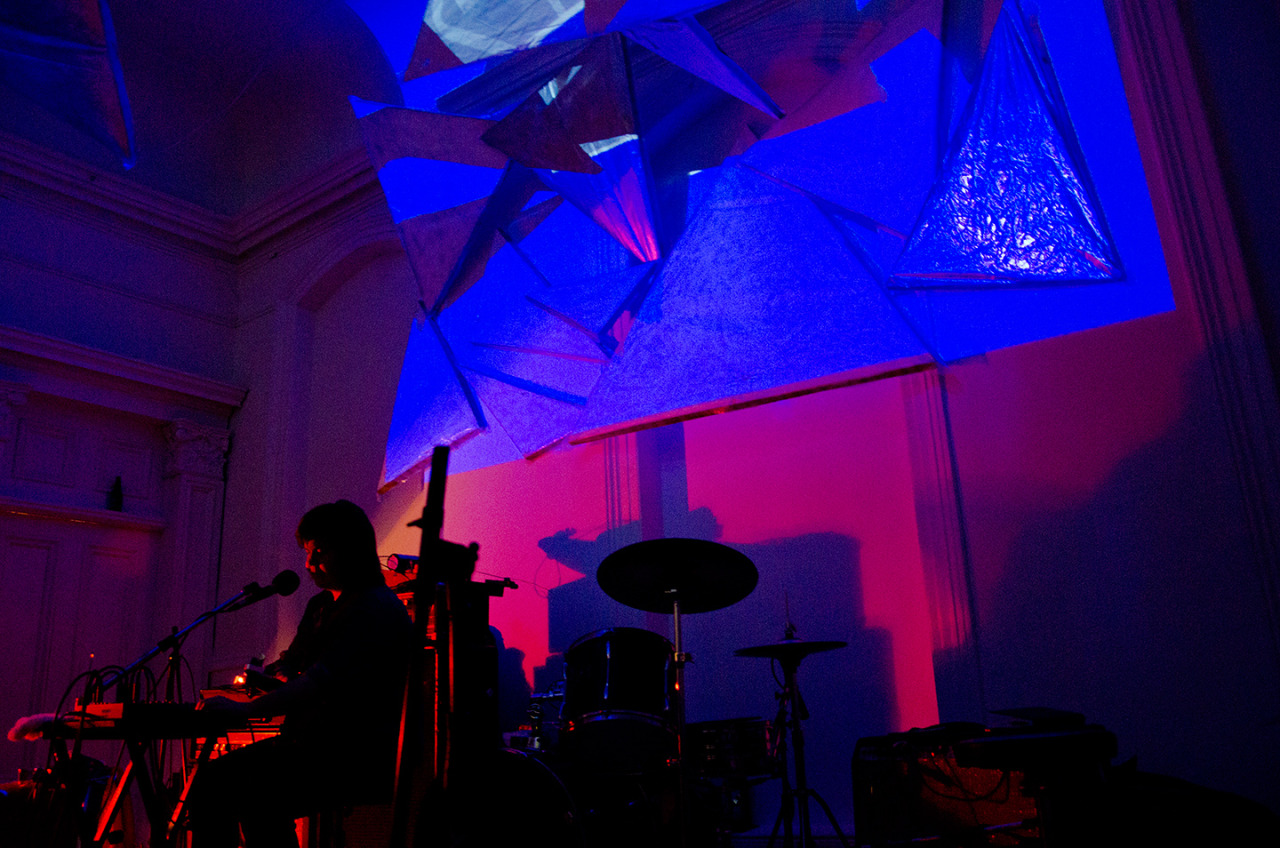
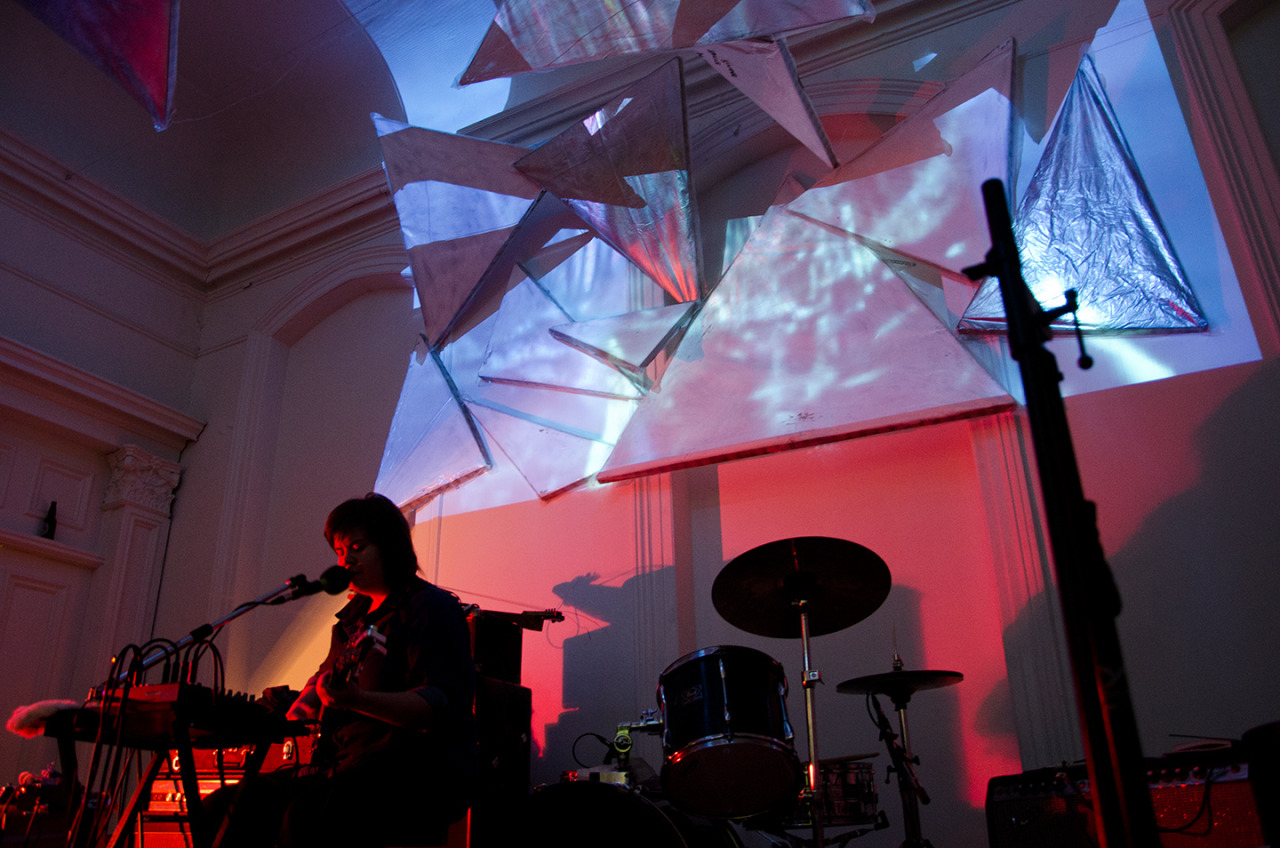

Thanks to Meg Yoshida for taking some wonderful photos of my set during the OBEY Convention!
13 Jun
Broken Deer - Polaraura Album Review - REDEFINE magazine
In Broken Deer’s experimental, ghostly fifth release, Polaraura, we see into Lindsay Dobbin’s musical temperament and natural and spiritual concerns.
12 Jun
OBEY CONVENTION + SOME NEWS
Wow. What a weekend. Friday’s show at the
Khyber (with D/A A/D, Organ Magic, PC Worship and Pete Swanson) was
amazing. I feel very lucky to have been a part of that. It was my first
time performing as Broken Deer in about a year, and my first time
performing a set solo. I feel really pleased with what I did. Thank you
to James Gauvreau for the wonderful whale projections, and to Evan and
Cam for doing such a great job with tech/sound. Thanks to Darcy and the
whole Obey crew for involving me in the best festival in Canada. And
thanks to everyone who came out to the show for your support. I really
appreciate it. Expect more shows in the near future.
Also, the limited edition Polaraura cassette is now sold out, but I plan to make a few more for Halifax folks. You can still purchase the album digitally via Bandcamp if that rocks your boat. For those of you who pre-ordered a cassette from away, I plan to get those in the mail late this week or early next week!
Finally, I wanted to let you know about a new sound/music project I have called Unseen World. This music fits outside the Broken Deer realm of experimental folk/field recording/singing wilderness songs. It’s more pop, oceanic, new age, journeying. Under this project, I have a tape coming out this month on Clocks & Daggers called Dreaming:
Also, the limited edition Polaraura cassette is now sold out, but I plan to make a few more for Halifax folks. You can still purchase the album digitally via Bandcamp if that rocks your boat. For those of you who pre-ordered a cassette from away, I plan to get those in the mail late this week or early next week!
Finally, I wanted to let you know about a new sound/music project I have called Unseen World. This music fits outside the Broken Deer realm of experimental folk/field recording/singing wilderness songs. It’s more pop, oceanic, new age, journeying. Under this project, I have a tape coming out this month on Clocks & Daggers called Dreaming:
‘Dreaming’ is comprised of sound journeys inspired by actual dreams of Unseen World - the new project by Lindsay Dobbin (Broken Deer) - during the summer of 2012. She’d spend a few hours each day creating a new song based on the dream from the night before— relying heavily on improvisation and shamanic methods to capture its space and feeling. What results is an album that sounds like a radio station receiving transmissions from typically unseen places: the ocean, the underworld, inside your body, and outer space.More news soon!
12 Jun
Mirt i Lindsay Dobbin na kasecie | Nowamuzyka.pl
A review from Poland (I’ve always wanted to go)! Anyone speak Polish out there?
10 Jun
Broken Deer by Adria Young
As Broken Deer, Lindsay Dobbin spent last winter in an off-the-grid cabin outside of Whitehorse recording Polaraura on two cassette recorders with built-in mics.
10 Jun
Prior to performing in this year’s Obey Convention, I sat down with CKDU 88.1 FM Station Coordinator Gianna Lauren to talk about my new album.
30 May
29 May
Pete Swanson, PC Worship, Organ Magic, Broken Deer, D/A A/D June 7th – 10:00pm | The Khyber | OBEY Convention
I’m playing a show in just over a week
during the Obey Convention. I’ve been busy preparing my live set, as
it’s been almost a year since I’ve played live, and so long since I’ve
played solo! I have new songs and new old songs to share and lots of
field recordings of animals and weather. Also, I will have some copies
of Polaraura available (now limited to 50 copies).
23 May
Broken Deer: Polaraura | Stereophile.com
Thanks to Stephen at Stereophile for posting about Polaraura today!
These are low-fidelity recordings of an extremely personal nature, but recordings that nevertheless transport the listener to another time and place. In this music, we hear carefully plucked guitar, gently tapped keys, the sound of winds, wolves, owls, and rivers.
20 May
A very special thank you to the old birch
trees outside Chester, Nova Scotia that provided some bark for the
cassette cases. Sustainably harvested, and offerings were made in
return.
20 May
Polaraura on cassette. Limited to 50
copies. Includes zine featuring writings from winter cabin time and
liner notes. Wrapped in birch bark and tied off with moose sinew. $10,
includes digital download.
Order here: http://brokendeer.bandcamp.com/album/polaraura
14 May
A small excerpt from the zine that is included with the Polaraura
cassette. All the writings were created while I was recording the
album, mostly by candlelight, in a Northern cabin. Each cassette is
unique, and wrapped in birch bark and moose sinew. I will post photos
soon.
You can pre-order the cassette here, and immediately receive the album digitally: http://brokendeer.bandcamp.com/album/polaraura
Orders will ship out in early June.
You can pre-order the cassette here, and immediately receive the album digitally: http://brokendeer.bandcamp.com/album/polaraura
Orders will ship out in early June.



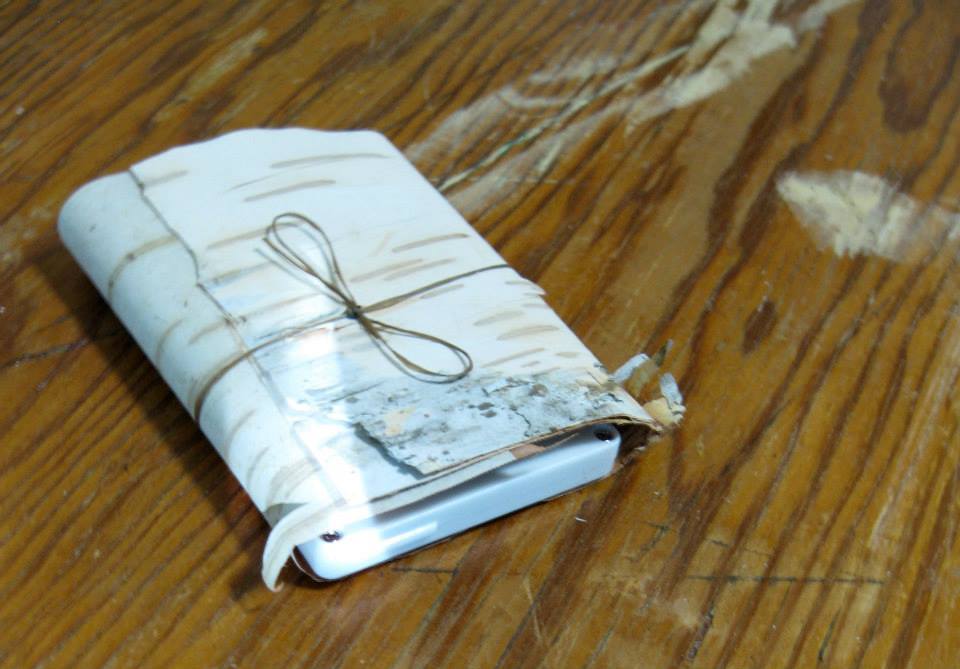

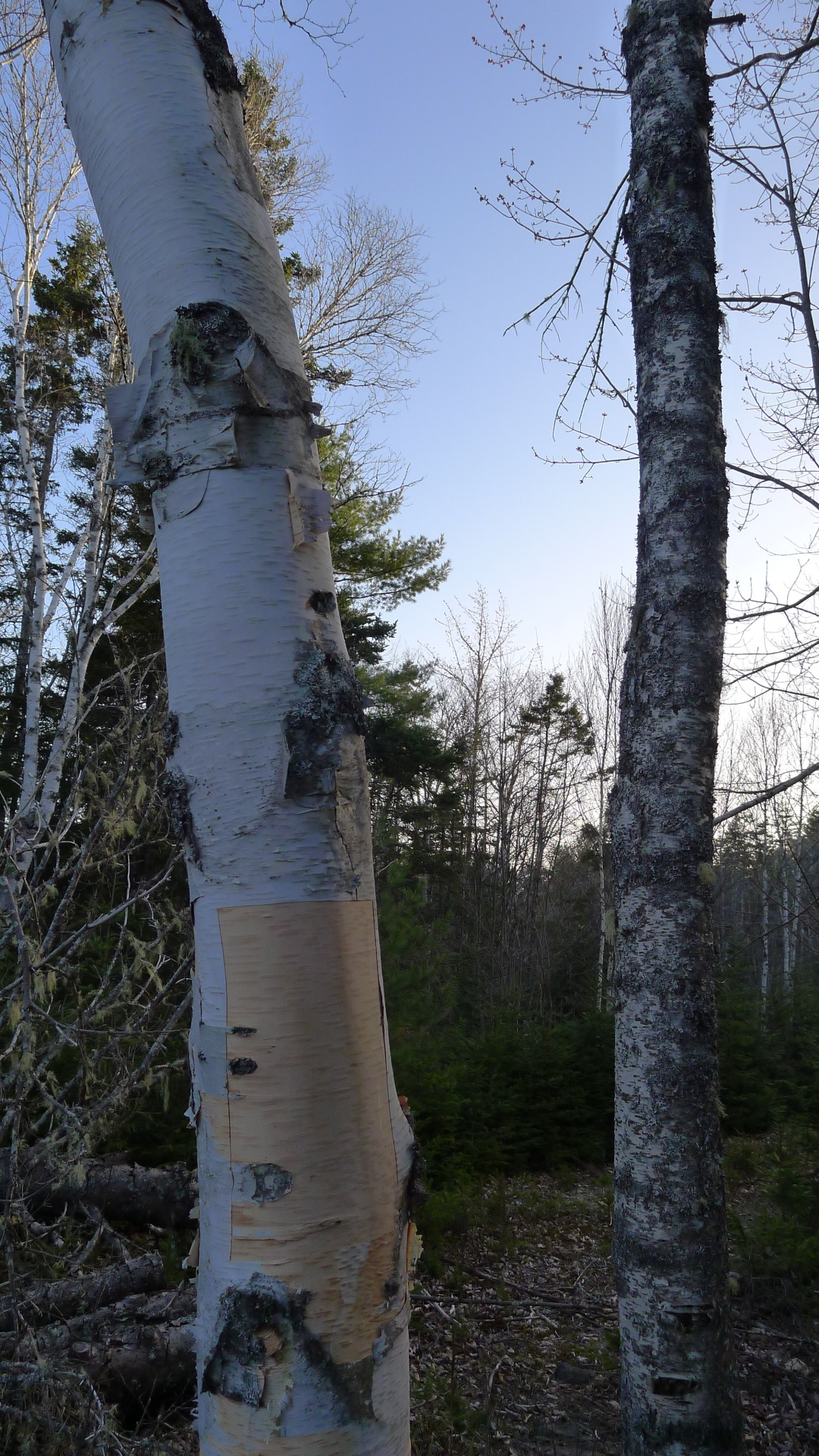
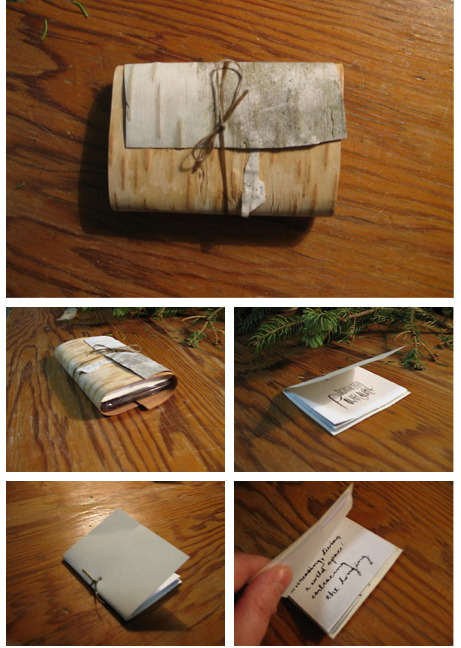
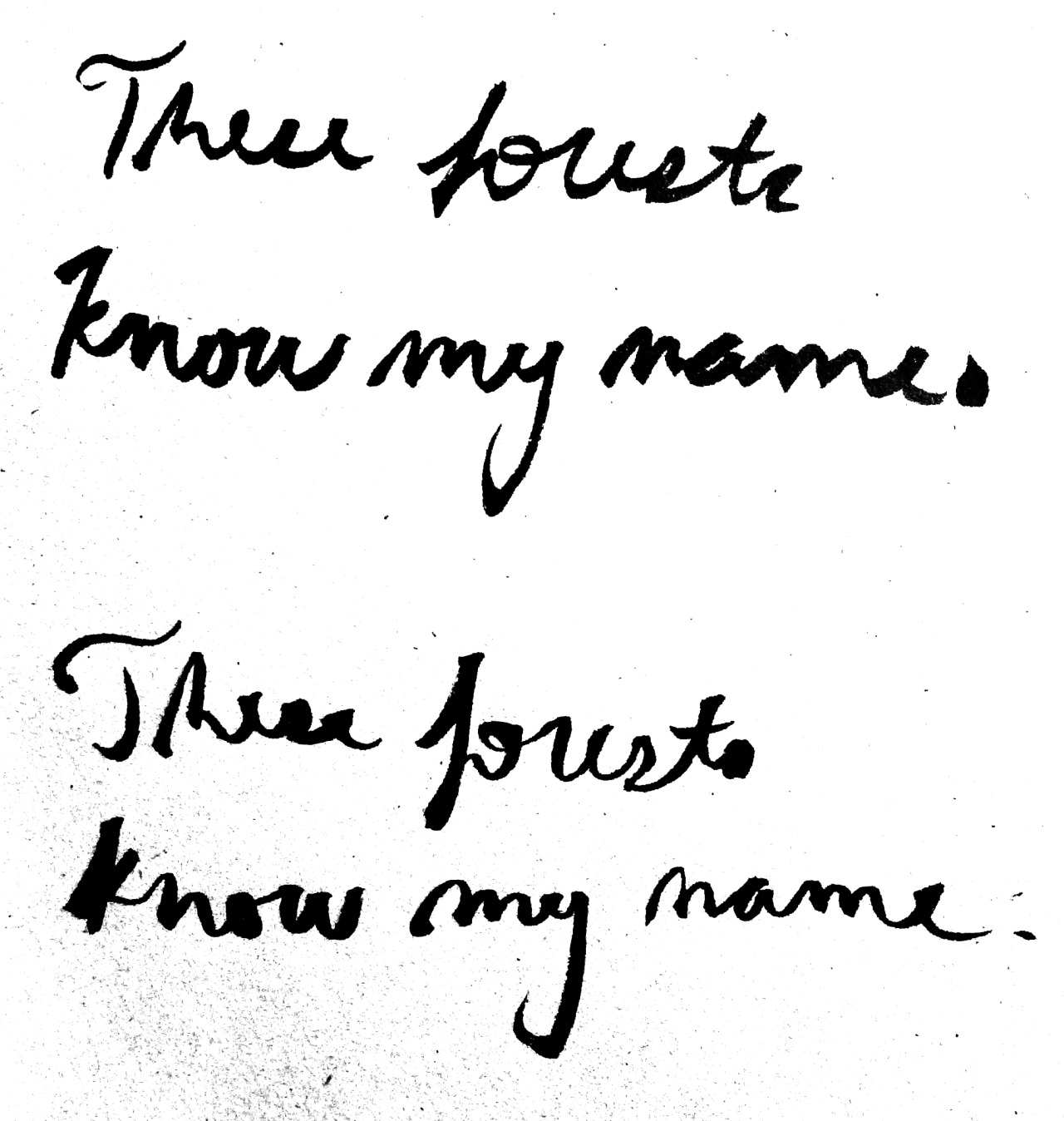
Nema komentara:
Objavi komentar